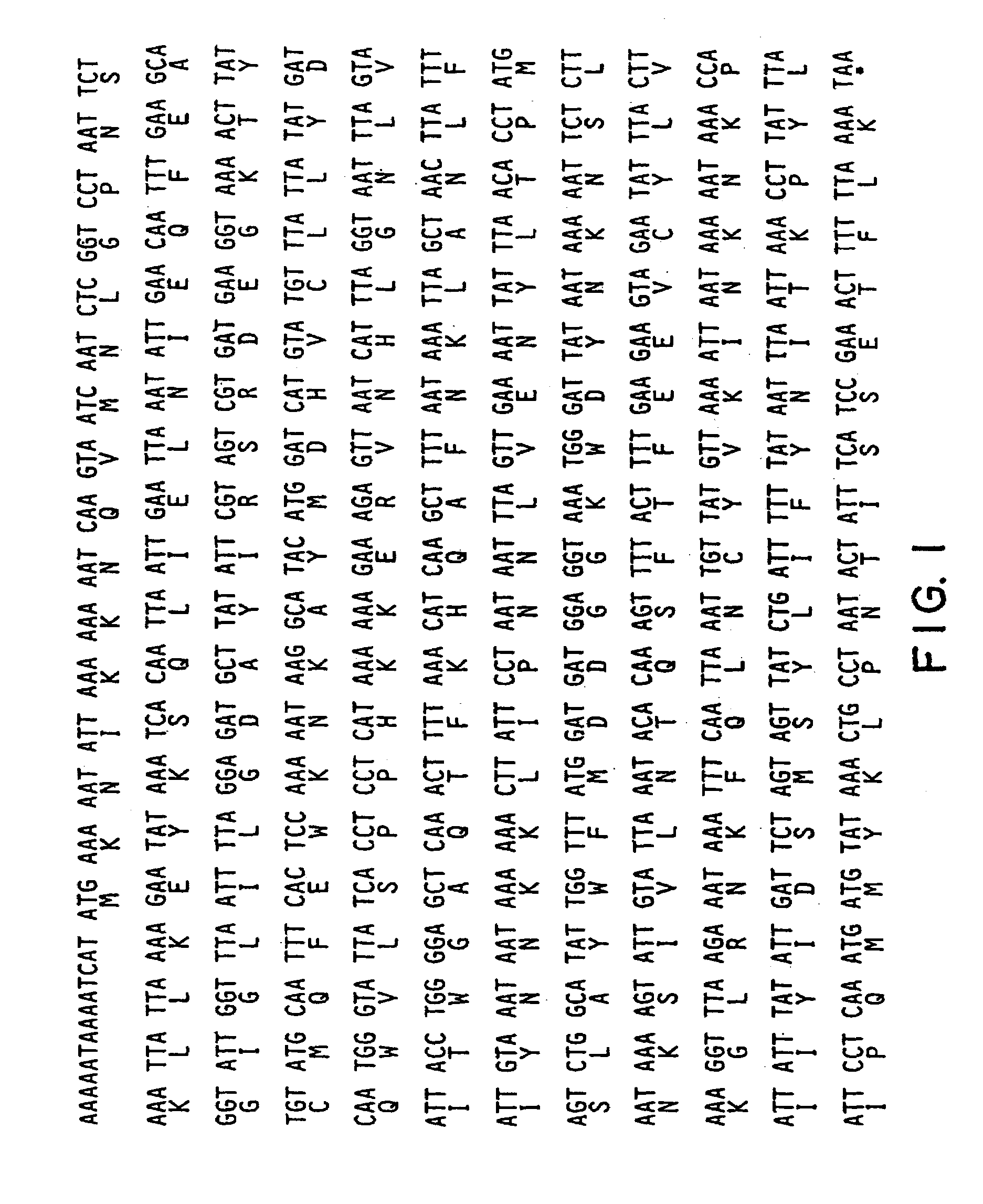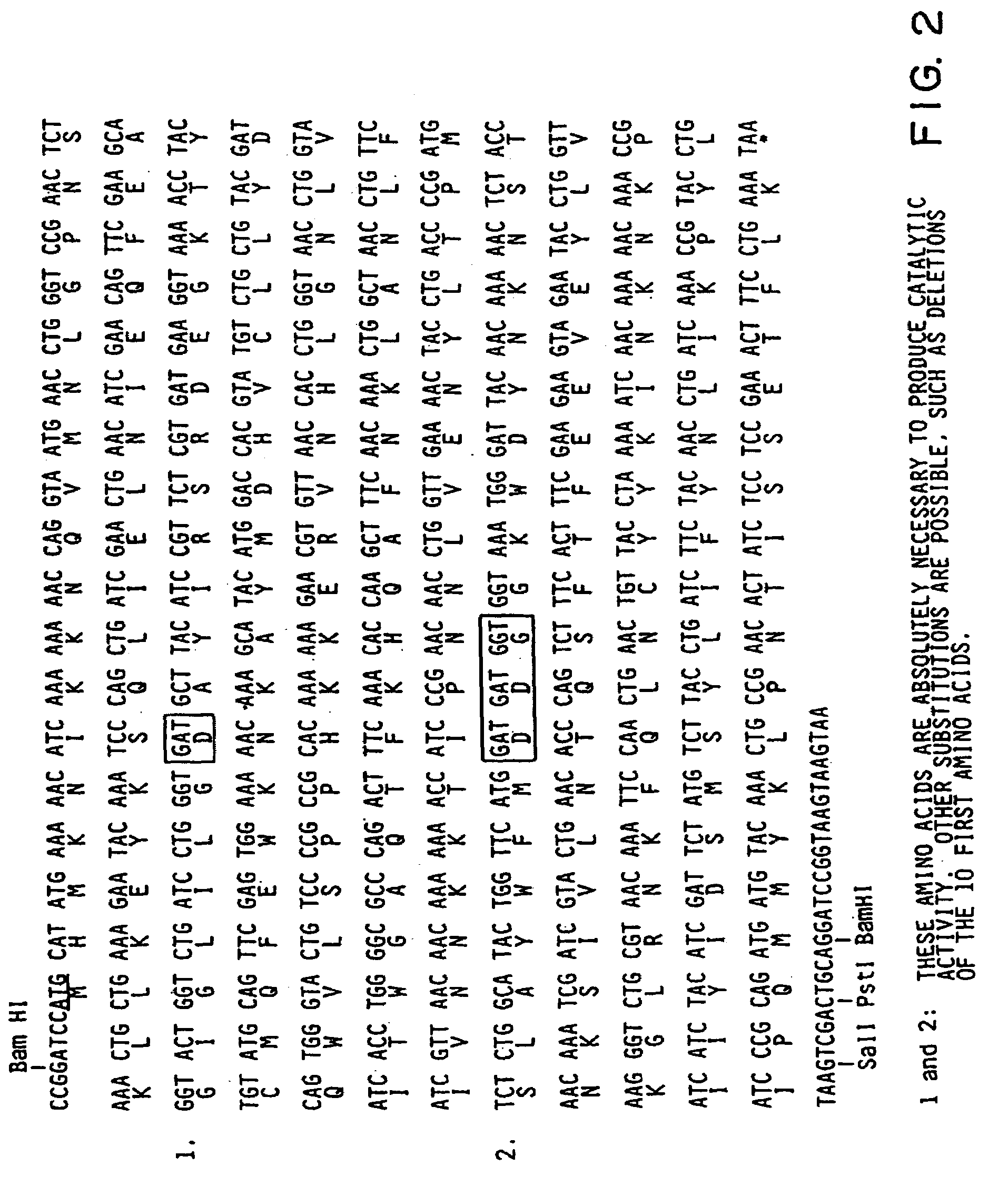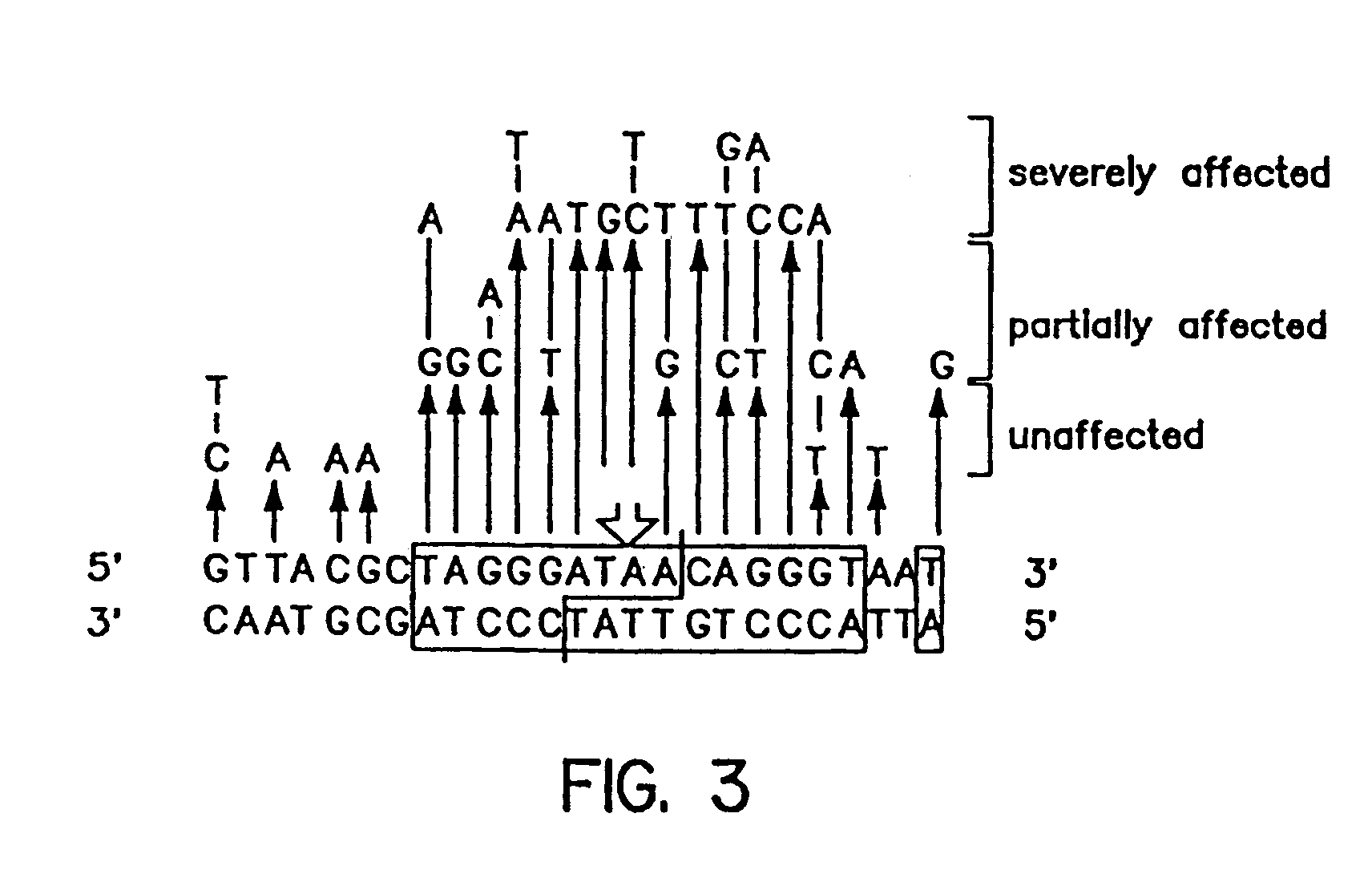Nucleotide sequence encoding the enzyme I-SceI and the uses thereof
a technology of i-scei and nucleotide sequence, applied in the field of nucleotide sequence, can solve problems such as the nature of the initiation step
- Summary
- Abstract
- Description
- Claims
- Application Information
AI Technical Summary
Problems solved by technology
Method used
Image
Examples
example 1
Application of the Nested Chromosomal Fragmentation Strategy to the Mapping of Yeast Chromosome XI
[0180]This strategy has been applied to the mapping of yeast chromosome XI of Saccharamyces cerevisiae. The I-SceI site was inserted at 7 different locations along chromosome XI of the diploid strain FY1679, hence defining eight physical intervals in that chromosome. Sites were inserted from a URA3-1-I-SceI cassette by homologous recombination. Two sites were inserted within genetically defined genes, TIF1 and FAS1, the others were inserted at unknown positions in the chromosome from five non-overlapping cosmids of our library, taken at random. Agarose embedded DNA of each of the seven transgenic strains was then digested with I-SceI and analyzed by pulsed field gel electrophoresis (FIG. 14A). The position of the I-SceI site of each transgenic strain in chromosome XI is first deduced from the fragment sizes without consideration of the left / right orientation of the fragments. Orientatio...
example 2
Application of the Nested Chromosomal Fragmentation Strategy to the Mapping of Yeast Artificial Chromosome (YAC) Clones
[0182]This strategy can be applied to YAC mapping with two possibilities.
[0183]-1-insertion of the I-SceI site within the gene of interest using homologous recombination in yeast. This permits mapping of that gene in the YAC insert by I-SceI digestion in vitro. This has been done and works.
[0184]-2-random integration of I-SceI sites along the YAC insert by homologous recombination in yeast using highly repetitive sequences (e.g., B2 in mouse or Alu in human). Transgenic strains are then used as described in ref. P1 to sort libraries or map genes.
[0185]The procedure has now been extended to YAC containing 450 kb of Mouse DNA. To this end, a repeated sequence of mouse DNA (called B2) has been inserted in a plasmid containing the I-SceI site and a selectable yeast marker (LYS2). Transformation of the yeast cells containing the recombinant YAC with the plasmid linearize...
example 3
Application of Nested Chromosomal Fragments to the Direct Sorting of Cosmid Libraries
[0186]The nested, chromosomal fragments can be purified from preparative PFG and used as probes against clones from a chromosome X1 specific sublibrary. This sublibrary is composed of 138 cosmid clones (corresponding to eight times coverage) which have been previously sorted from our complete yeast genomic libraries by colony hybridization with PFG purified chromosome X1. This collection of unordered clones has been sequentially hybridized with chromosome fragments taken in order of increasing sizes from the left end of the chromosome. Localization of each cosmid clone on the I-SceI map could be unambiguously determined from such hybridizations. To further verify the results and to provide a more precise map, a subset of all cosmid clones, now placed in order, have been digested with EcoRI, electrophoresed and hybridized with the nested series of chromosome fragments in order of increasing sizes fro...
PUM
| Property | Measurement | Unit |
|---|---|---|
| humidity | aaaaa | aaaaa |
| humidity | aaaaa | aaaaa |
| humidity | aaaaa | aaaaa |
Abstract
Description
Claims
Application Information
 Login to View More
Login to View More - R&D
- Intellectual Property
- Life Sciences
- Materials
- Tech Scout
- Unparalleled Data Quality
- Higher Quality Content
- 60% Fewer Hallucinations
Browse by: Latest US Patents, China's latest patents, Technical Efficacy Thesaurus, Application Domain, Technology Topic, Popular Technical Reports.
© 2025 PatSnap. All rights reserved.Legal|Privacy policy|Modern Slavery Act Transparency Statement|Sitemap|About US| Contact US: help@patsnap.com



